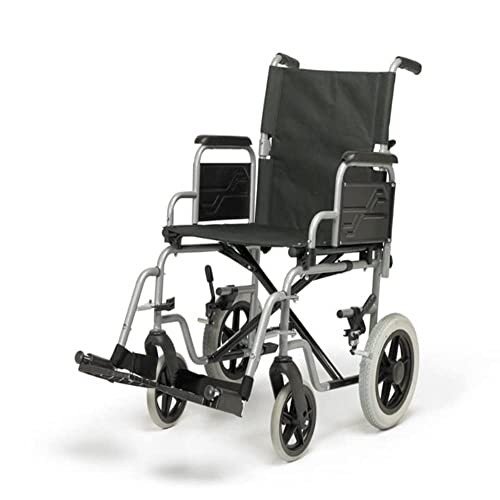24-Hours To Improve Mobility Scooter

A Comprehensive Guide to Buying a Mobility Scooter
Mobility scooters have become a crucial tool for many people wanting to boost their self-reliance and mobility. With a large variety of models and functions offered, selecting the best mobility scooter can be daunting. This short article offers an informative guide to help consumers navigate their choices, assess their requirements, and make a notified purchase.
Comprehending Mobility Scooters
Mobility scooters are electric vehicles created for people who experience mobility challenges. They are especially useful for elders, those with disabilities, or people recovering from injuries. Mobility scooters can differ commonly in regards to design, functions, and prices.
Kinds Of Mobility Scooters
Before embarking on a purchase, it's necessary to comprehend the various kinds of mobility scooters available:
Three-Wheel Scooters:
- Generally more maneuverable in tight spaces
- Lightweight and portable
- Perfect for indoor use
Four-Wheel Scooters:
- Offer greater stability and balance
- Ideal for outside use over various surfaces
- Usually have a longer battery life
Foldable/Portable Scooters:
- Designed to be quickly transferred and kept
- Can often fit in the trunk of an automobile
- Ideal for those who travel frequently
Sturdy Scooters:
- Built to accommodate larger individuals
- Frequently included more robust functions for outdoor usage
- Typically geared up with larger batteries for extended variety
Factors to Consider When Buying a Mobility Scooter
1. Weight Capacity
Select a mobility scooter that can support the user's weight. The majority of scooters have a weight limitation varying from 250 to 500 pounds. It is crucial to make sure that the scooter can accommodate the user easily.
2. Variety and Battery Life
The variety is how far the mobility scooter can take a trip on a single charge. Typical varieties differ in between 10 to 30 miles. Think about the user's day-to-day activities and select a scooter with an ideal range.
3. Scooter Dimensions
Think about the size of the scooter, including its weight and dimensions. A more compact scooter may be perfect for narrow hallways and tight areas, while larger models provide additional stability and comfort.
4. Surface Capability
Assess where the scooter will mostly be used. If the user prepares to take a trip mainly on pavement, a lightweight model may suffice. However, if previous requires to pass through gravel or unequal surface areas, consider a four-wheel scooter built for off-road usage.
Top Features to Look For
Convenience
- Adjustable Seats: Look for scooters with cushioned and height-adjustable seats to make sure comfort throughout travel.
- Armrests: These improve safety and support while browsing.
Safety and Visibility
- Headlights and Taillights: Essential for nighttime usage.
- Turn Signals and Reflectors: Improve visibility and safety while on the roadway.
User-Friendly Controls
- Joystick or Drive Controls: These must be intuitive and easy to control.
- Easy-to-Read Displays: A control panel that reveals battery life, speed, and range can improve the user experience.
Extra Features
- Storage Compartments: These offer added benefit for carrying individual products while on the go.
- Weather condition Protection: Consider designs with rain covers or windscreens if used in variable climate condition.
Cost Considerations
When budgeting for a mobility scooter, rates can vary anywhere from ₤ 500 to over ₤ 5,000 depending upon the design, features, and brand name. Additional expenses might consist of:
- Extended Warranty: Protects against defects and can conserve money in the long run.
- Devices: Optional functions, such as updated seats, lights, or storage options.
| Function | Cost Range |
|---|---|
| Basic Models | ₤ 500 - ₤ 1,500 |
| Mid-Range Models | ₤ 1,500 - ₤ 3,000 |
| High-End Models | ₤ 3,000 - ₤ 5,000 |
Funding Options
Many merchants offer financing strategies, and some regional government initiatives may offer grants or assistance for those in requirement. Investigate possible financial help with neighborhood resources or mobility service companies.
Frequently asked questions about Buying a Mobility Scooter
What is the difference in between a mobility scooter and a wheelchair?
Mobility scooters are motorized and allow users to browse individually, while wheelchairs may need physical assistance or manual operation.
How do I keep a mobility scooter?
Regular upkeep includes examining battery life, cleaning the scooter, and inspecting tires and brakes. Always describe the user manual for specific guidelines.
Can mobility scooters be used inside?
Yes, numerous models are developed for both indoor and outside use. Nevertheless, three-wheel scooters tend to be much better fit for indoor navigation due to their tighter turning radius.
Are mobility scooters covered by insurance coverage?
Some insurance prepares cover a part of the costs for mobility scooters if they are deemed clinically needed. Contact your provider for specific information.
How quickly can a mobility scooter go?
Many mobility scooters have a maximum speed varying from 4 to 8 miles per hour. Nevertheless, the suitable rate might differ depending upon local policies.
Purchasing a mobility scooter can considerably boost one's self-reliance and lifestyle. By comprehending the types, features, and costs connected with mobility scooters, prospective buyers can make well-informed decisions that match their needs and choices. Customization and thorough research are key to ensuring satisfaction with this essential financial investment.

